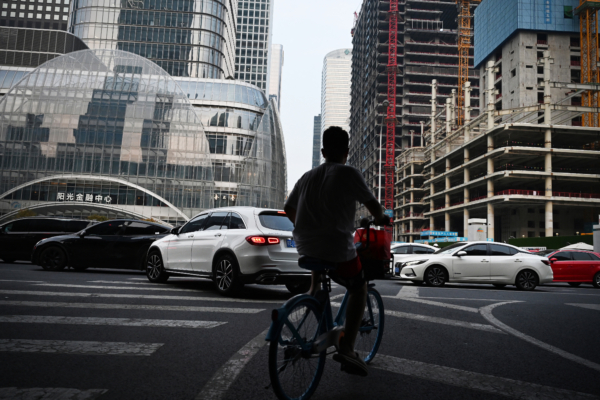In China, the economic growth rate in the second quarter fell far below expectations, marking the weakest performance in five quarters. This indicates that efforts to boost consumption have not been effective, with long-term real estate stagnation and unstable employment suppressing domestic demand, leading to a fragile and sluggish economic recovery.
Official data from the Chinese government shows that the country’s GDP grew by 4.7% from April to June, the slowest pace since the first quarter of 2023. This growth rate was lower than the 5.1% predicted by analysts in a Reuters survey and slower than the 5.3% growth rate in the previous quarter.
Of particular concern is the consumption sector, where deflationary pressures have forced businesses to cut prices of various goods such as cars, food, and clothing, resulting in retail sales growth hitting its lowest point in 18 months.
The real estate crisis in China deepened in June, with new home prices falling at the fastest pace in nine years. In the first half of this year, new construction starts and real estate investment decreased by 23.7% and 10.1%, respectively. This has negatively impacted consumer confidence and limited local governments’ ability to raise new funds through land sales.
Lynn Song, Chief Economist for ING Bank Greater China, commented, “Overall, the disappointing GDP data suggests that the road to achieving the 5% growth target remains challenging.”
Song added, “The negative wealth effect from the decline in real estate and stock prices, along with industries cutting costs leading to slow wage growth, is dragging down consumption, shifting people’s spending from major purchases to basic ‘eating, drinking, and entertainment’ consumption.”
Xu Tianchen, Senior Analyst at the Economist Intelligence Unit (EIU), expressed concern over the 4.7% growth, noting it is approaching the low point from the second quarter of 2023. Tianchen highlighted a decline in discretionary spending, such as jewelry and automobiles, possibly due to recent deleveraging efforts and impacts on high-salary industries stifling employment and income prospects.
Louise Loo, Chief Economist at Oxford Economics, stated in a report, “We estimate that the month-on-month drop in non-essential retail spending is the largest since the Shanghai lockdown in April 2022.”
Analysts anticipate that debt reduction and boosting consumer confidence will be key focuses of the upcoming Communist Party Central Committee meeting this week. However, addressing one issue may exacerbate another’s severity.
The Chinese authorities aim to achieve around 5.0% economic growth in 2024, but many analysts believe this target may be challenging to reach and additional stimulus measures may be required.
Xiaojia Zhi, an economist at BNP Paribas, stated, “The second-quarter data is disappointing, and the government needs to consider larger policy support to achieve the annual growth target of around 5%.”
Zhi also noted that the increasing possibility of a “Trump 2.0” administration implies a significant risk of a sharp decline in external demand for China.
Former U.S. President Trump has previously stated that if re-elected, he would impose more restrictive measures and consider imposing tariffs on Chinese imports exceeding 60%.
The Chinese government aims to drive growth in the “post-pandemic era” through manufacturing and high-tech industries. However, with many trading partners implementing trade barriers, this strategy faces growing uncertainties.
In the event of a significant decline in external demand, China’s weak domestic demand may struggle to sustain normal economic operations.
Following the disappointing data release, stock markets in Hong Kong and China experienced expanded declines, with the Hang Seng China Enterprises Index falling by as much as 1.99%.
While the Chinese National Bureau of Statistics attributed part of the second-quarter economic growth setback to extreme weather and frequent rain disasters, they also acknowledged that “the current economic challenges have increased, and domestic effective demand is insufficient.”
China’s economic growth has long been unbalanced, with industrial output far exceeding domestic consumption. With real estate stagnation and increasing local government debt, deflation risks are intensifying.
Earlier data released this month indicated that China’s exports in June grew by 8.6% year-on-year, while unexpectedly, imports contracted by 2.3%, suggesting manufacturers are placing advance orders in anticipation of trade partner tariffs.
Zhao Peng, Senior China Strategist at ANZ Bank, highlighted, “With the rise of trade protectionism, the outlook for the second half of the year is unfavorable for China’s export-driven economic growth.”
Peng further noted, “Among all the monthly data released today, the weak retail sales performance is particularly noteworthy. The 2% year-on-year growth rate is far below the market’s prediction of 3.4%.”
He added that household consumption remains very weak, and initiatives like the “trade-in for new” program have failed to boost consumption. With employers cutting salaries and high youth unemployment rates, household consumption is likely to remain cautious in the future.
While there are high hopes for the upcoming Communist Party Central Committee meeting, many analysts believe it will be challenging for the authorities to make swift and effective responses.
Harry Murphy Cruise, from Moody’s Analytics, stated, “While there are strong reasons for reform, it won’t be particularly exciting. A major policy shift can be seen as an admission of failure and will certainly lose face.” Cruise suggested that the Chinese government is likely to announce moderate policy adjustments.
(This article referenced relevant reports from CNBC, Reuters, and Bloomberg)

